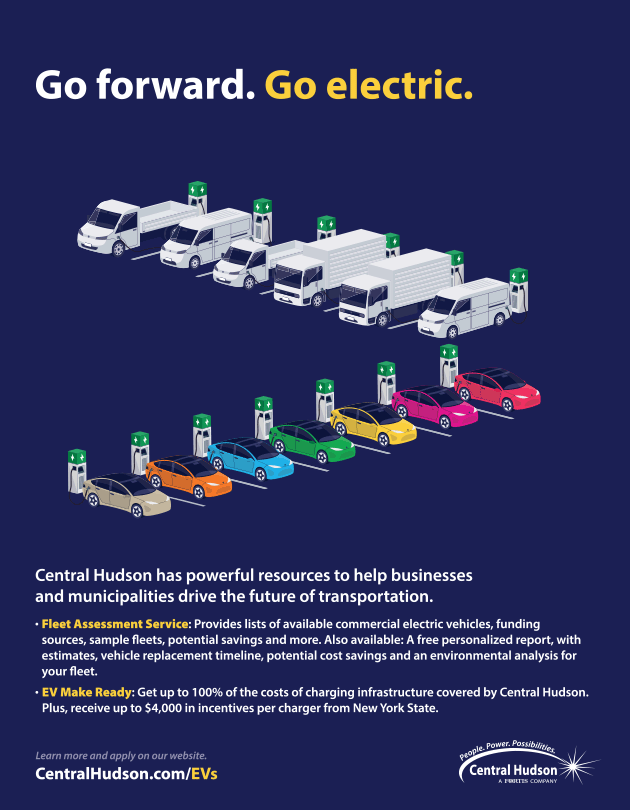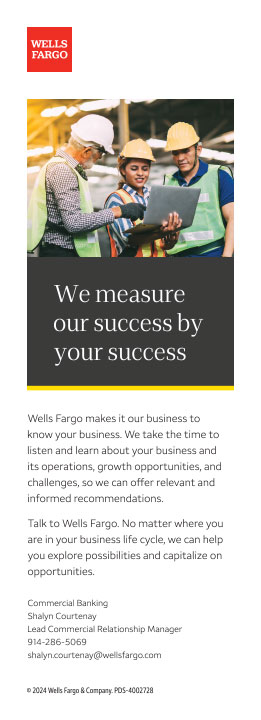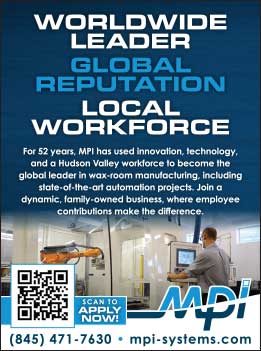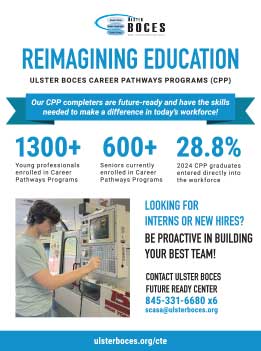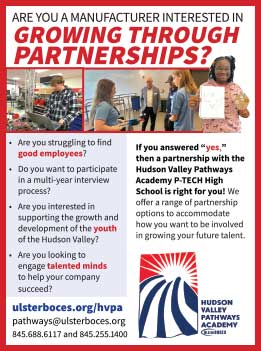NEWS, RULES, REGULATION AND LEGISLATION
THE MANUFACTURING ECONOMY
September Roundup of Economic Indicators for U.S. Manufacturers
Economic reports released in September offer a slightly more optimistic view for manufacturing, though employment in the sector remains a concern. Despite a gloomy jobs report for the sector, several key indicators point to a modest improvement, with gains in output, new orders, and positive growth seen across multiple regions.
Here are the Key Numbers from Industrynet:
- Manufacturing output rose 0.9% in August, led by the auto sector, while capacity utilization advanced 0.6%.
- Manufacturing activity improved slightly, inching up 0.4%, yet with a reading of 47.2% remains in its fifth straight month of contraction.
- The Labor Department reports a loss of 24,000 jobs in manufacturing for August.
- Prices for the month of August reflected a modest increase of 0.2% month-over-month.
- In a surprise rebound following two months of declines, new orders for manufactured goods jumped 5.0%, reaching $592 billion (July data reported in September).
Global Manufacturing PMI Signals Contraction For Third Successive Month In September
At 48.8 in September, the J.P.Morgan Global Manufacturing PMI® signaled a deterioration in overall operating conditions for the third successive month. Albeit remaining modest, the rate of decline was the fastest in almost a year (since October 2023). Four of the five PMI components were at levels consistent with contraction in September, as output, new orders, employment and stocks of purchases all fell. Only the (inverted) suppliers’ delivery times index made a positive contribution to the headline PMI.
Manufacturing production decreased for the first time in the year-so-far, as companies scaled back output in response to reduced intakes of new business. New orders fell for the third consecutive month, with the pace of contraction the steepest since December 2022. The trend in international trade also remained weak, as the rate of contraction in new export orders hit an 11-month record.
OECD Sees Global Growth Stabilizing At 3.2% This Year
The world economy was projected to grow 3.2% both this and next year, the Organisation for Economic Cooperation and Development forecast, nudging up its 2024 forecast from 3.1% previously while leaving 2025 unchanged. As the lagged impact of central bank tightening evaporates, interest rate cuts would boost spending going forward while consumer spending benefitted from lower inflation, the OECD said in an update of its latest economic outlook.
- U.S. growth was expected to slow from 2.6% this year to 1.6% in 2025 though interest rate cuts would help cushion the slowdown, the OECD said, trimming its 2025 estimate from a forecast of 1.8% in May.
- The Chinese economy, the world’s second-biggest, was seen slowing from 4.9% in 2024 to 4.5% in 2025 as government stimulus spending is offset by flagging consumer demand and a real estate rut.
- The euro zone would help make up for slower growth in the two biggest economies next year with the 20-nation bloc’s growth forecast to nearly double from 0.7% growth this year to 1.3% as incomes grow faster than inflation.
- The OECD hiked its outlook for the UK economy amid high wage growth, projecting the UK economy expanding by 1.1% in 2024 and 1.2% in 2025, up from May forecasts for 0.4% this year and 1% next year.
The Conference Board U.S. Leading Economic Index Trends Lower in August
The leading indicators for the U.S. economy sank 0.2% in August, the privately run Conference Board said. That is the sixth straight monthly decline. The index fell 0.6% in July. The leading index is a composite of 10 forward-looking components designed to show whether the economy is in danger of falling into recession and where the economy is headed in the near term. The August index was not as weak as July’s because building permits and manufacturing hours turned positive. The drivers of the weakness remained the same – weak factory orders and the interest-rate spread between 10-year Treasury yields and the federal-funds rate, said Eugenio Aleman, chief economist at Raymond James.
Recession fears have picked up over the summer as the labor market has stumbled. “The economy will lose momentum in the second half of this year as higher prices, elevated interest rates and mounting debt erode domestic demand,” said Justyna Zabinska-La Monica, senior manager of business-cycle indicators at the Conference Board.
Fed Slashes Interest Rates By A Half Point
The Federal Reserve voted to lower interest rates by a half percentage point, opting for a bolder start in making its first reduction since 2020. The long-anticipated pivot followed an all-out fight against inflation the central bank launched two years ago. Eleven of 12 Fed voters backed the cut, which will bring the benchmark federal-funds rate to a range between 4.75% and 5%. Quarterly projections released Wednesday showed a narrow majority of officials penciled in cuts that would lower rates by at least a quarter point each at meetings in November and December.

In its policy statement, the Fed said the decision reflected “greater confidence that inflation is moving sustainably toward 2%” and that the central bank “judges that the risks to achieving its employment and inflation goals are roughly in balance.” In their projections, all Fed officials thought the unemployment rate would end the year between 4.2% and 4.5%. In June, most saw the unemployment rate settling around 4.0% at year-end. While some Fed officials had argued in recent weeks the economy wasn’t weak enough to necessitate a half-point cut, others had concluded that labor-market cooling this summer warranted a larger reduction because the Fed was, in effect, catching up for lost time.
Empire State Manufacturing Survey: Activity Up for the First Time In a Year
Business activity grew in New York State for the first time in nearly a year, according to firms responding to the September 2024 Empire State Manufacturing Survey. The headline general business conditions index rose sixteen points to 11.5.
- The new orders index climbed seventeen points to 9.4, a multi-year high, pointing to a modest increase in orders.
- The shipments index rose eighteen points to 17.9, its highest level in about a year and a half.
- Unfilled orders were little changed.
- The inventories index rose eleven points to 0.0, indicating that inventories were level after declining for the prior two months.
- The delivery times index rose to -1.1, suggesting that delivery times were little changed, and the supply availability index came in at -2.1, a sign that supply availability was slightly lower.
- The index for number of employees came in at -5.7, pointing to another month of modest employment reductions.
- After a steep drop last month, the average workweek index recovered to 2.9, signaling a slight increase in hours worked.
- Price indexes were little changed: the prices paid index was 23.2, and the prices received index remained low at 7.4.
- The index for future business activity moved up eight points to 30.6, with 45 percent of respondents expecting conditions to improve over the next six months.
- However, the capital spending index fell eleven points to -2.1, dipping below zero for the first time since 2020.
Climate, Environment, Safety and Health
New York State Looks at Nuclear to Fill Clean Energy Gaps At Energy Summit
Gov. Kathy Hochul said nuclear power and next-generation technologies, not fracked natural gas, should be in the state’s energy mix as New York works to speed the transition to a clean-energy grid. “From wind and solar to geothermal and hydrogen or even splitting an atom, this is the possibility that lies before us,” Hochul said September 5th in Syracuse. One major focus of the conference was the subject of nuclear power. Two of the five panel discussions looked at how advanced nuclear power reactors might help the state meet its energy goals.
In recent months, several state agencies said the state would not achieve a 70% reliance on renewable energy — wind, solar and hydropower — by 2030 and net-zero emissions by 2040. Surging amounts of electricity needed to power cars, heating systems and large-scale data centers are expected to increase the strain on the grid in the years to come. The USA TODAY Network reported last month that the Hochul administration met with a developer of small nuclear reactors recently to learn more about the current state of the technology.
OSHA Launches Severe Injury Report Dashboard
On September 4, OSHA unveiled an online tool giving users the ability to search its severe injury report database and view trends related to workplace injuries occurring in states covered by federal OSHA. The Severe Injury Report dashboard allows users to search and download data by year, industry, state, establishment name, and Occupational Injury and Illness Classification System codes. The dashboard includes information on all severe injuries reported by employers covered under federal OSHA since 2015.
Federal law requires employers to notify OSHA of a work-related in-patient hospitalization, amputation or loss of an eye within 24 hours of the incident. The agency’s compliance assistance specialists and on-site consultations are available across the country and in U.S. territories to help employers. OSHA encourages workers and employers to use the dashboard to learn how severe injuries happen in their industries and use the agency’s available resources to help prevent workplace injuries.
Travelers Survey: Common Workplace Accidents Result in Costliest Claims
After examining 1.2 million workers compensation claims from 2017 to 2021, a new survey from Travelers found the most frequent causes of injury as follows:
- Overexertion (29% )
- Slips, trips and falls (23%)
- Being struck by an object (12%)
- Motor vehicle accidents (5%)
- Caught-in or caught-between hazards (5%)
“There are tangible consequences to any injury, and many include long-term, sometimes permanent, effects,” said Chris Hayes, assistant vice president of Workers Compensation and Transportation, Risk Control, Travelers, in a statement. “By understanding where the risks were in the past, businesses can better identify what to look for and tailor their risk management and employee safety strategies accordingly to help prevent injuries from happening.”
Supreme Court Overturns Chevron Rule in Blow to Agency Power
The Supreme Court in June significantly weakened the power of federal agencies to approve regulations in a major decision that could have sweeping implications for the environment, public health and the workplace. The 6-3 ruling, overturning a precedent from 1984, will shift the balance of power between the executive and judicial branches and hands an important victory to conservatives who have sought for years to rein in the regulatory authority of the “administrative state.”
The decision overturns the Chevron v. Natural Resources Defense Council precedent that required courts to give deference to federal agencies when creating regulations based on an ambiguous law. Congress routinely enacts open-ended laws that give latitude to agencies to work out — and adjust — the details to new circumstances. Conservatives have long sought to rein in regulatory authority, arguing that Washington has too much control over American industry and individual lives. The justices have been incrementally diminishing federal power for years, but the new case gave the court an opportunity to take a much broader stride.
DEC Releases Draft Freshwater Wetland Regulations
The State Department of Environmental Conservation has released its proposed freshwater wetlands regulations. The draft regulations were available for public comment until September 19. The regulations would add an estimated one million additional acres of wetland habitats in New York State.
New York’s Freshwater Wetlands Act was enacted in 1975 and modernized as part of the 2022-2023 Enacted State Budget. The proposed rule would take effect in January 2025 and clarify jurisdictional status of smaller wetlands of “unusual importance” that meet one of 11 specific criteria contained in the newly amended Freshwater Wetlands Act. In addition, the draft regulations provide a revised wetlands classification system and a process for the public to request and appeal jurisdictional determinations.
EPA Finalizes Rule Cutting Hydrofluorocarbons
The EPA announced on September 23 a final rule to establish a new program to manage, recycle, and reuse hydrofluorocarbons (HFCs) under the American Innovation and Manufacturing (AIM) Act. The agency notes that the final rule includes provisions that will reduce wasteful leaks from large refrigeration and air conditioning equipment. The final rule, establishing the Emissions Reduction and Reclamation (ER&R) program, addresses the third part of the bipartisan AIM Act, and comes less than two years after the U.S. ratification of the Kigali Amendment to the Montreal Protocol, an international agreement to phase down climate-damaging HFCs and help avoid up to 0.5 degrees Celsius of global warming by 2100.

The final ER&R program includes requirements for repairing leaking equipment, the installation and use of automatic leak detection systems on large refrigeration systems, using reclaimed HFCs to service certain existing equipment, minimizing HFC releases from fire suppression equipment, fire suppression technician training, and removal of HFCs from disposable cylinders before they are discarded. The regulations also establish a standard that limits the amount of new, or virgin, HFCs that can be contained in reclaimed HFC refrigerants. Additionally, the EPA is establishing alternative standards under the Resource Conservation and Recovery Act for ignitable spent refrigerants when recycled for reuse.
Labor, Employment and Workforce Development
Employers Are Bracing For Healthcare Costs To Spike In 2025. Here’s Why.
Employers are up against escalating healthcare costs driven by mounting prescription drug expenses, inflation and worsening chronic conditions, a new survey shows. The Business Group on Health released its annual Employer Health Care Strategy Survey on in early September, which examines the trends that large employers are watching and their plans to address the healthcare challenges they may face. The survey projects that healthcare cost trend will jump to 8% in 2025, growing from 6% in 2022. Actual healthcare costs have increased by 50% since 2017, according to the report.
The report found that the median percentage spent on pharmaceuticals grew to 27% in 2023 compared to 21% in 2021. Multiple factors are driving this increase, including the significant demand for GLP-1s as well as greater use of high-priced cell and gene therapies. Cancer also remains the condition driving the highest costs for employers, according to the report. This includes both elevated costs for new therapies as well as a growing prevalence of cancer diagnoses among younger employees.
Gallop: U.S. Employee Engagement Inches Up Slightly After 11-Year Low
After hitting an 11-year low in the first quarter of 2024, U.S. employee engagement improved slightly in the second quarter, rising from 30% to 32% being fully engaged at work. This uptick translates to an increase of 3.2 million American full- and part-time workers feeling involved in and enthusiastic about their work. While this increase in engaged employees falls short of the 2020 U.S. high of 36%, it mirrors the levels seen throughout most of 2022. Actively disengaged employees decreased slightly from 17% in the first quarter of 2024 to 16% now.
Employee engagement in the U.S. has not returned to pre-pandemic levels, but improvements in quarter two of 2024 are most pronounced in foundational elements: knowing what’s expected at work; having materials and equipment to do work right; and having an opportunity to do what employees do best. Each of these elements saw an increase of four points or more in the percentage who strongly agree. Employees’ ratings on each of these elements had become vulnerable in the second half of 2021, contributing to a decline in overall employee engagement.
FTC Noncompete Ban Blocked by Texas Judge
On August 20, 2024, the U.S. District Court for the Northern District of Texas in Ryan, LLC v. FTC, granted Plaintiff-Intervenors’ motion for summary judgment, holding that the FTC’s non-compete rule is unlawful, and ordering that the FTC’s non-compete rule shall not take effect on September 4, 2024, or thereafter. Unlike the preliminary injunction, which was specific to the Plaintiff-Intervenors, this ruling prevents the FTC from enforcement of the rule against any company nationwide.
The FTC may appeal this decision, which not only sets aside the non-compete rule, but also holds that the FTC lacks any substantive rulemaking authority with respect to unfair methods of competition. Any such appeal, however, would be heard by the U.S. Court of Appeals for the Fifth Circuit and possibly the U.S. Supreme Court, both of which have recently issued decisions curtailing the power of federal agencies.
Ongoing Worker Shortages Highlight An ‘Urgent Need’ For Upskilling
Despite the labor force participation rate rebounding post-pandemic, a new report finds that worker shortages remain a persistent problem for U.S. employers—and that upskilling may be a key to addressing the challenge. The 2024 Labor Day Report from Littler’s Workplace Policy Institute, the employment law firm’s government relations and public policy arm, delves into 10 key issues that employers face. Leading the pack is the ongoing worker shortage.
About 1.7 million workers are missing from the post-pandemic workforce, the U.S. Chamber of Commerce reports, while data from the Conference Board shows that 38% of small firms are unable to fill open positions. At the same time, the “skills gap” in the workforce is accelerating as automation and AI create significant shifts in how work is performed. “We continue to see a labor shortage and an urgent need to upskill the current workforce to adapt to the new world of work,” says Michael Lotito, Littler shareholder and co-chair of the institute.
What Do Immigrants Do for Government Budgets?
Among the benefits economists often say immigration brings to aging Western countries is a healthier public purse. Having more immigrants expands the supply of young, productive workers to pay the taxes that finance the pensions and healthcare of the elderly, the argument goes. New research shows the fiscal impact of immigration is not that simple. The fiscal benefits are clear for high-skilled immigrants, but less so, and possibly even negative, for the lower skilled, according to some studies.
In aggregate, the recent surge in immigrants will reduce the federal deficit, the Congressional Budget Office found; it indicated this was more so for higher- than lower-skilled migrants, although it said an increase in less-educated workers would also trigger stronger wage growth for the more educated people needed to work with them. Low-skilled immigrants, many claiming asylum, make up an unusually large share of recent arrivals on both sides of the Atlantic. The CBO didn’t estimate the impact of the surge on state and local budgets, but said it expected those costs to outweigh revenues.
CHRO Optimism Continues To Fall In Q3, Despite Cooling Labor Market
Chief Human Resource Officers (CHROs) retained their spot as the most pessimistic members of the C-Suite in 2024, with a greater proportion of HR chiefs forecasting declining business conditions in the months ahead compared to CEOs, CFOs and board members. The proportion of CHROs forecasting improvements in business conditions in the U.S. declined double digits in Strategic CHRO360’s third-quarter CHRO Confidence Index polling during the week of August 19 – from 39 percent in Q2 to 35 percent in Q3. In contrast, 46 percent of CEOs and 40 percent of CFOs expect the business landscape to improve over the coming months—and 42 percent of board members feel the same.
Slowing demand, increasing wages and political uncertainty are, CHROs report, affecting corporate outlooks. Nearly 20 percent fewer CHROs now expect their respective companies to post higher revenues by this time next year, from 73 percent of CHROs in Q2 to 59 percent in Q3. The only time CHROs have been so few in forecasting increasing revenue was in the third quarter of 2022, amid labor shortages brought about by the Great Resignation, ongoing supply chain delays and mounting inflationary pressures.
Workforce Development
2024 Annual Luncheon and Expo November 22nd
The Council of Industry Annual Luncheon & Member Expo will be held on Friday, November 22nd at the Grandview in Poughkeepsie. Our keynote speaker is Ken Girardin, Director of Research for the Empire Center for Public Policy, Inc., on election results and the current fiscal climate in New York State. The Empire Center for Public Policy, Inc. is an independent, non-partisan, non-profit think tank based in Albany, New York.
At the Luncheon we will recognize the Fall 2023 and 2024 Certificate in Manufacturing Leadership recipients. The Member Expo will precede the luncheon from 11:15 to approximately 12:15.


